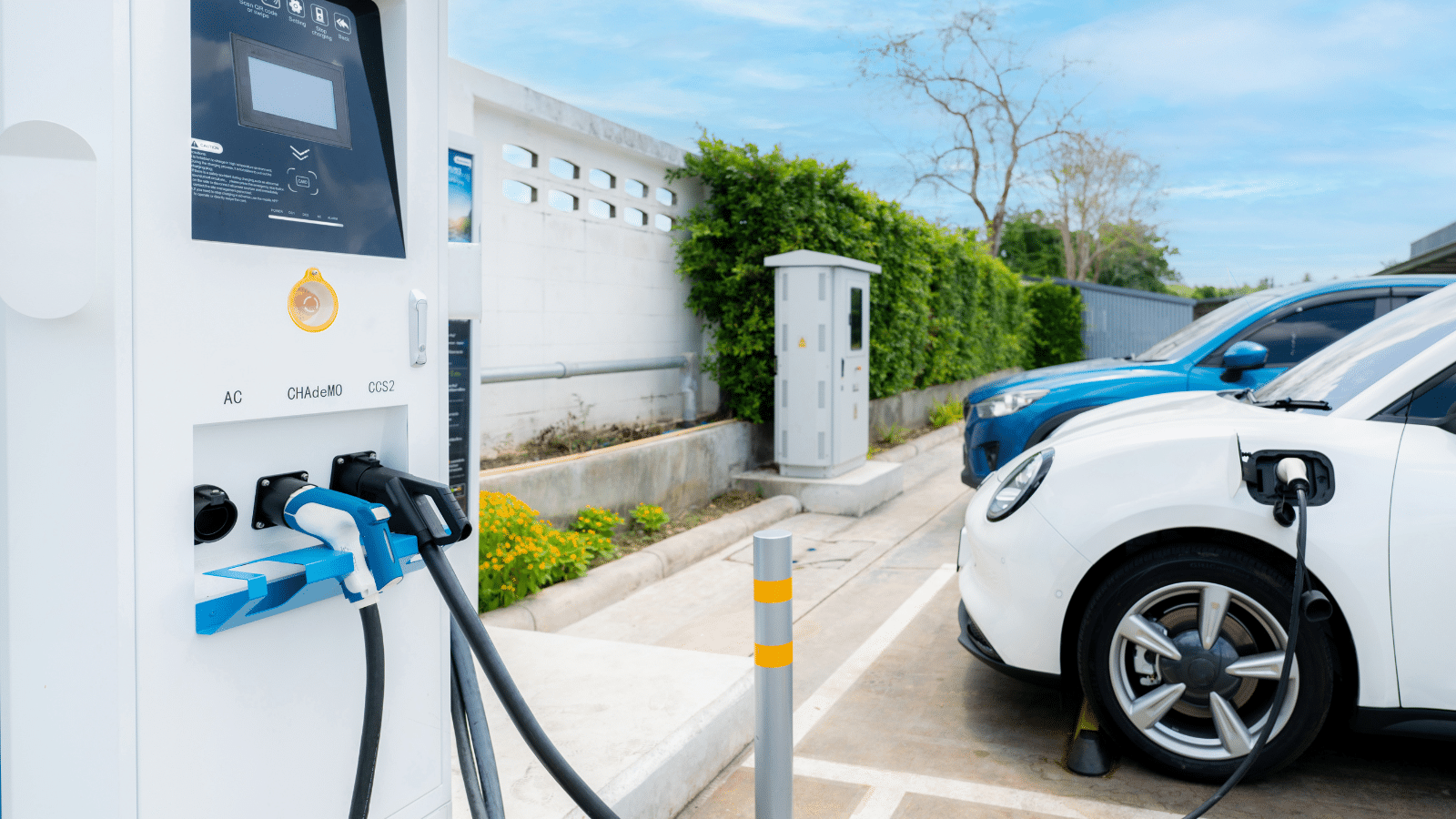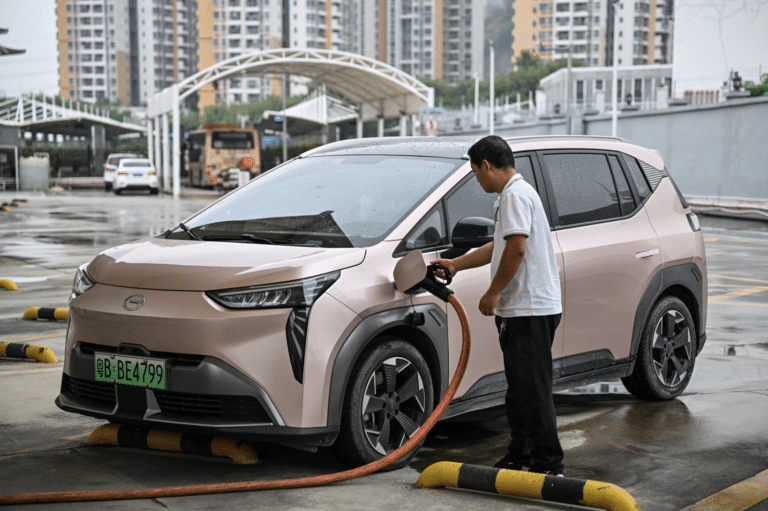This Energy Explained post represents the research and views of the author. It does not necessarily represent the views of the Center on Global Energy Policy. The piece may be subject to further revision. Contributions to SIPA for the benefit of CGEP are general use gifts, which gives the Center discretion in how it allocates these funds. Rare cases of sponsored projects are clearly indicated.
For a full list of financial supporters of the Center on Global Energy Policy at Columbia University SIPA, please visit our website at Our Partners. See below a list of members that are currently in CGEP’s Visionary Circle. This list is updated periodically.
Electric vehicle (EV) batteries are a major source of critical mineral (CM) demand. Reducing the CM intensity of electric mobility (e-mobility) is crucial for easing supply chain pressure, promoting sustainable mining practices, and developing a resilient national battery recycling infrastructure, ultimately enhancing the resilience of US transportation systems and that of the broader US economy to external CM supply shocks.[1] In a previous Energy Explained article, the author discussed how lowering CM intensity could be integrated into the decision making of organizational fleet operators and public authorities that regulate the operations of such fleets. But what about the individual behavior of drivers, namely EV adoption, use, and charging behavior? In this article, the author highlights current knowledge gaps with respect to how individual behavior can potentially impact the CM intensity of e-mobility, and proposes research and policy questions to address this problem. Greater focus on this issue by both the research community and policymakers is critical in order to identify behavior-driven solutions to reduce CM intensity and make the e-mobility transition more equitable.
Vehicle and Battery Preferences
Vehicle adoption choices may have the potential to lower the CM demand in EV batteries as transportation systems transition toward electrification. For instance, adopting lighter electric cars with shorter ranges is a behavior that could alleviate critical mineral requirements for e-mobility.[2] Similarly, choosing vehicles with refurbished batteries is a solution to limit the extraction of new CM.[3] However, despite numerous studies on EV and charging infrastructure preferences,[4] profound knowledge gaps persist regarding factors that could influence US drivers’ preferences toward smaller, shorter-range vehicles.
A key knowledge gap is the lack of strong empirical evidence of changes in consumer preferences for EV range as a function of charging infrastructure density. The question to answer is: What public charging infrastructure density is needed to increase acceptability of shorter-range EVs? Or, as economists would more precisely put it: What is the marginal rate of substitution between EV range and charging infrastructure density? Answering this question would enable an understanding of tradeoffs needed between public charging infrastructure investment and critical mineral demand mitigation.
Furthermore, the highway “arms race” is driving consumer preference for larger vehicles over smaller ones due to safety concerns related to the prevalence of larger vehicles on the road.[5] Breaking this “arms race” would not only mitigate fatalities caused by large vehicle prevalence but also reduce CM demand, as transportation electrifies. However, it is unclear how policies can be designed to promote EV adoption in a way that curbs the demand for large vehicles but without discouraging electrification.
Just like it’s unclear how to encourage consumer acceptance of battery and vehicle downscaling, the role of remanufactured EV batteries and their impact on consumer choices in the US is unknown. The limited number of studies [6] on perceptions of remanufactured EV batteries are not US-based and lack estimations of quantitative acceptance metrics like the willingness to pay for remanufactured batteries.
Charging and Driving Behavior
Even before remanufacturing or direct repurposing becomes necessary, charging and driving behavior can impact the lifespan of an EV battery. Studies indicate that factors such as distance, daily driving patterns, charging frequency, and fast charging significantly influence battery degradation, thereby affecting the overall EV battery lifetime.[7] Additionally, driver participation in vehicle-to-grid (V2G) programs can impact battery life. While V2G technologies without intelligent control algorithms have been shown to reduce battery life, ongoing research and development suggest that implementing sophisticated charging and discharging controls may actually extend battery life.[8]
However, the potential impact of battery life variation—resulting from driving and charging behaviors as well as participation in V2G programs—on CM requirements for EV batteries remains unclear. Investigating heterogeneity in EV battery lifetime due to the vast range of consumer behaviors may have substantial implications for managing CM demand in large-scale EV deployment scenarios. In designing effective policies and regulating V2G services to avoid inefficiencies in CM use, it is essential to understand and model travel and charging preferences, acceptance of vehicle and charging technologies, and responses to policy-induced behavioral changes.
Equity Implications
Finally, the availability of more affordable, smaller, shorter-range electric vehicles with remanufactured batteries and a more widespread charging infrastructure, in combination with smart charging and V2G solutions, could reduce EV upfront costs as well as their total cost of ownership. This could potentially enable access to e-mobility for lower-income communities, currently excluded from the EV transition. Given the risk that cheaper access to electric vehicles could lead to a spike in CM demand, it is all the more important to explore pathways for equitable access to e-mobility with reduced critical mineral intensity.
A Research Agenda
Against this background, more research is needed if consumers are to be engaged in mitigating the CM intensity of the transition to EVs. Questions that need addressing include:
- What strategies could promote adoption of lighter electric cars with shorter ranges and vehicles with refurbished batteries without discouraging overall electrification efforts? Additionally, how do charging infrastructure deployment and safety concerns over vehicle size affect the critical mineral demand?
- How does the variation in EV battery lifetime caused by heterogeneous charging and driving behaviors—including factors such as distance and type of daily driving, frequency of charging, use of fast charging, and participation in V2G programs—influence implications for CM requirements in large-scale EV deployment scenarios? Furthermore, how can policies and regulations be designed to optimize EV battery usage and mitigate inefficiencies in CM utilization, particularly in the context of V2G services?
- How can pathways be developed to ensure equitable access to electric mobility, particularly for lower-income communities, through the availability of cheaper, smaller, shorter-range electric vehicles with remanufactured batteries and a more widespread charging infrastructure, while actively exploring measures to prevent or minimize any resulting increases in critical mineral demand for batteries during the EV transition?
Despite acknowledging the potential impact of behavioral changes on critical mineral demand for e-mobility, current assessments of CM demand[9] fail to incorporate the potentially heterogeneous responses of drivers into demand-side policies aimed at moderating critical mineral requirements for transportation electrification. These assessments also overlook how driving and charging preferences (including potential participation in smart charging and V2G programs) could influence the EV battery lifecycle and, consequently, critical mineral demand. The proposed research agenda has the potential to address these gaps by explicitly linking factors that influence electric vehicle and charging infrastructure preferences, as well as driving and charging behavior, to CM demand-supply dynamics in the United States. Crucially, more research will also provide insights into how demand-side measures aimed at reducing critical mineral demand for e-mobility could contribute to achieving more equitable access to electric mobility. This intersection between critical mineral demand management and equity in e-mobility represents a new frontier in e-mobility research.
CGEP’s Visionary Circle
Corporate Partnerships
Occidental Petroleum Corporation
Tellurian Inc
Foundations and Individual Donors
Anonymous
Anonymous
the bedari collective
Jay Bernstein
Breakthrough Energy LLC
Children’s Investment Fund Foundation (CIFF)
Arjun Murti
Ray Rothrock
Kimberly and Scott Sheffield
Notes
[1] Nedal T. Nassar et al., “Evaluating the Mineral Commodity Supply Risk of the U.S. Manufacturing Sector,” Science Advances 6, no. 8 (2020), https://doi.org/10.1126/sciadv.aay8647.
[2] International Energy Agency, World Energy Outlook 2022, 2022, https://www.iea.org/reports/world-energy-outlook-2022.
[3] Levke Albertsen et al., “Circular Business Models for Electric Vehicle Lithium-Ion Batteries: An analysis of current practices of vehicle manufacturers and policies in the EU,” Resources, Conservation and Recycling 172 (2021), https://doi.org/10.1016/j.resconrec.2021.105658; Achim Kampker, Saskia Wessel, Falko Fiedler, and Francesco Maltoni, “Battery Pack Remanufacturing Process up to Cell Level with Sorting and Repurposing of Battery Cells,” Journal of Remanufacturing 11 (2021), https://doi.org/10.1007/s13243-020-00088-6.
[4] Scott Hardman et al., “A Review of Consumer Preferences of and Interactions with Electric Vehicle Charging Infrastructure,” Transportation Research Part D: Transport and Environment 62 (2018), https://doi.org/10.1016/j.trd.2018.04.002; Debapriya Chakraborty, David S. Bunch, Jae Hyun Lee, and Gil Tal, “Demand drivers for charging infrastructure-charging behavior of plug-in electric vehicle commuters,” Transportation Research Part D: Transport and Environment 76 (2019), https://doi.org/10.1016/j.trd.2019.09.015; David L. Greene et al., “Public Charging Infrastructure for Plug-In Electric Vehicles: What Is It Worth?” Transportation Research Part D: Transport and Environment 78 (2020), https://doi.org/10.1016/j.trd.2019.11.011; Ranjan Kumar and Kumar Alok, “Adoption of Electric Vehicle: A Literature Review and Prospects for Sustainability,” Journal of Cleaner Production 253 (2020), https://doi.org/10.1016/j.jclepro.2019.119911.
[5] Michelle J. White, “The ‘Arms Race’ on American Roads: The Effect of Sport Utility Vehicles and Pickup Trucks on Traffic Safety,” Journal of Law and Economics 47, no. 2 (2004), https://doi.org/10.1086/422979; Shanjun Li, “Traffic Safety and Vehicle Choice: Quantifying the Effects of the ‘Arms Race’ on American Roads,” Journal of Applied Econometrics 27, no. 1 (2012), https://doi.org/10.1002/jae.1161.
[6] Mitsutaka Matsumoto, Kenichiro Chinen, and Hideki Endo, “Comparison of U.S. and Japanese Consumers’ Perceptions of Remanufactured Auto Parts,” Journal of Industrial Ecology 21, no. 4 (2017), https://doi.org/10.1111/jiec.12478; Kenichiro Chinen et al., “Electric Vehicle Owners’ Perception of Remanufactured Batteries: An Empirical Study in China,” Sustainability 14, no. 17 (2022), https://doi.org/10.3390/su141710846; Yoon-Young Chun, Kenichiro Chinen, and Mitsutaka Matsumoto, “How to Attract Newness-Conscious Consumers to a Circular Electric Vehicle Economy,” Sustainable Production and Consumption 40 (2023), https://doi.org/10.1016/j.spc.2023.06.018.
[7] Fan Yang, Yuanyuan Xie, Yelin Deng, and Chris Yuan, “Predictive Modeling of Battery Degradation and Greenhouse Gas Emissions from U.S. State-Level Electric Vehicle Operation,” Nature Communications 9 (2018), https://doi.org/10.1038/s41467-018-04826-0; Davide Fioriti, “Battery Lifetime of Electric Vehicles by Novel Rainflow-Counting Algorithm with Temperature and C-Rate Dynamics: Effects of Fast Charging, User Habits, Vehicle-to-Grid and Climate Zones,” Journal of Energy Storage 59 (2023), https://doi.org/10.1016/j.est.2022.106458.
[8] Fioriti, “Battery Lifetime of Electric Vehicles by Novel Rainflow-Counting Algorithm with Temperature and C-Rate Dynamics”; Truong M. N. Bui et al., “A Study of Reduced Battery Degradation Through State-of-Charge Pre-Conditioning for Vehicle-to-Grid Operations,” IEEE Access 9 (2021), https://doi.org/10.1109/ACCESS.2021.3128774; Yifan Wei et al., “A Comprehensive Study of Degradation Characteristics and Mechanisms of Commercial Li(NiMnCo)O2 EV Batteries under Vehicle-To-Grid (V2G) Services,” Batteries 8, no. 10 (2022), https://doi.org/10.3390/batteries8100188.
[9] International Energy Agency, World Energy Outlook 2022; International Energy Agency, Critical Minerals Market Review 2023, 2023, https://www.iea.org/reports/critical-minerals-market-review-2023; International Energy Agency, Global Supply Chains of EV Batteries, 2022, https://www.iea.org/reports/global-supply-chains-of-ev-batteries; Komal Habib, Snjólaug Tinna Hansdóttir, and Hina Habib, “Critical Metals for Electromobility: Global Demand Scenarios for Passenger Vehicles, 2015–2050,” Resources, Conservation and Recycling 154 (2020), https://doi.org/10.1016/j.resconrec.2019.104603.










